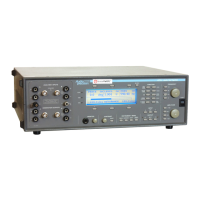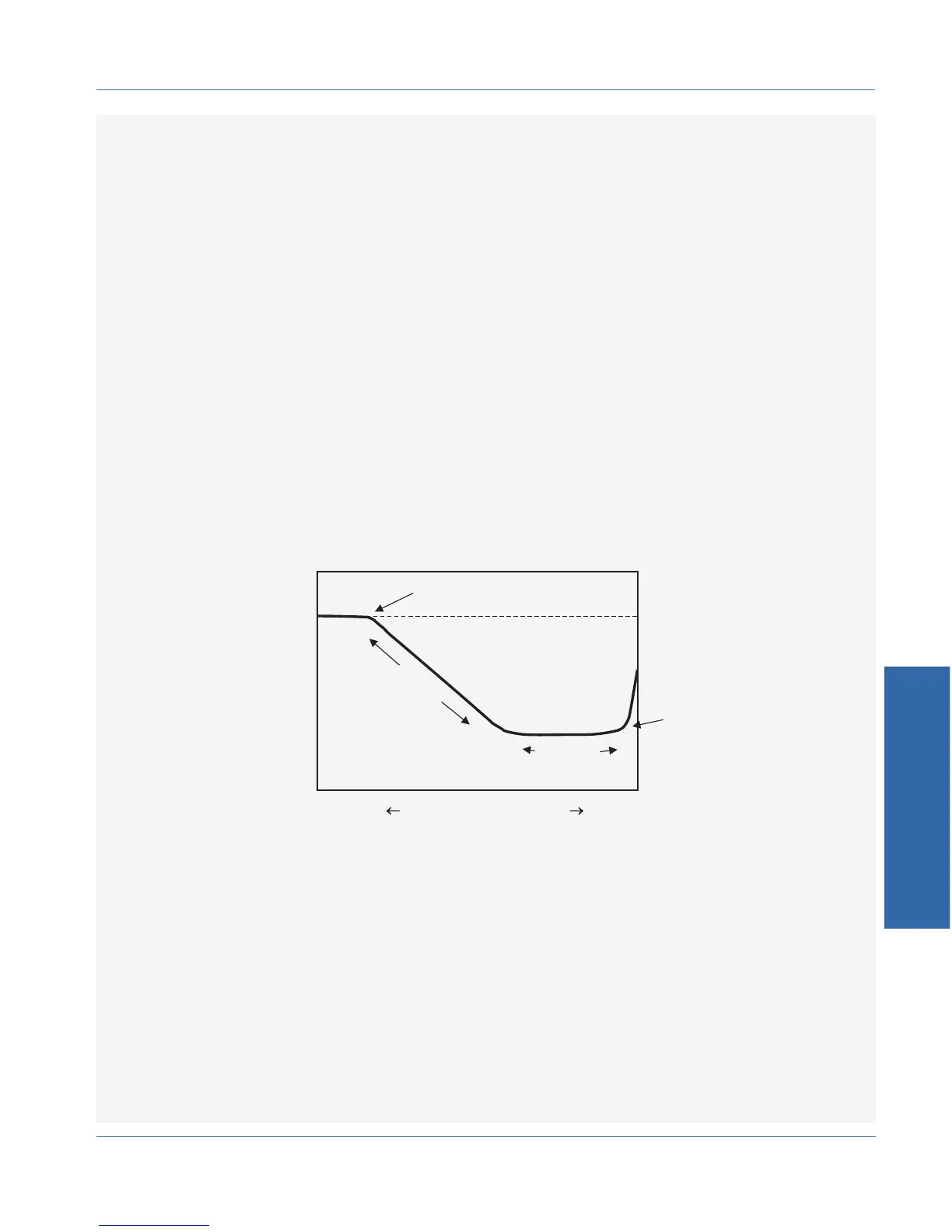Since all devices create some noise, any device has a noise floor. This
is the level of noise that is always created by the device. If the
fundamental tone has a lower amplitude than the noise floor, there will
be essentially no difference between the level of filtered and unfiltered
signals and the THD+N will be 100%.
In some devices, the unwanted signals may actually increase as signal
amplitude decreases. If you suspect this, you may want to make an
absolute THD+N measurement, which does not include the amplitude
before filtering in the measurement. This is accomplished by selecting
any unit besides % or dB.
All devices also have a maximum allowable amplitude. If the
fundamental tone is above this amplitude, the device will generally
clip, creating very high distortion. Almost any device will show very
high distortion readings at maximum or near-maximum amplitude.
The following graph shows common THD+N characteristics as a
function of amplitude:
Note that for some low-distortion devices, the flat area before clipping
may shrink or not exist at all. The THD+N measurement may be
noise-dominated at all amplitudes below the clipping threshold.
THD+N at 100% (or 0 dB)
If the THD+N reads 100% (or 0 dB), the amplitude of signal is the
same before and after the filter. Even if a device is creating a huge
amount of distortion or interference, the THD+N should be less than
100% (0 dB)
THD+N
(Log Scale)
Amplitude
(Log Scale)
higher
lower
Fundamental has
reached noise floor
THD+N is
dominated
by noise
THD+N is
dominated
by distortion
Clipping
threshold
Figure 4-18. THD + N characteristics as a function of amplitude
FUNCTION Descriptions Understanding THD + N
4 Functions
ATS-1 Access User's Manual 4-19

